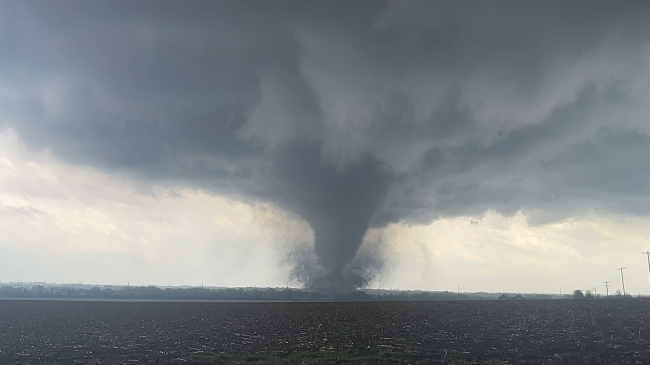Drought coverage down nearly 44% since November 2022

The sun rises over Seattle, Washington. May 2023 was Washington state’s warmest May on record and was the 11th-warmest May for the U.S. in 129 years. (Image credit: Jacob Stark/Getty images)
May 2023 was quite warm across the contiguous U.S., ranking as the 11th-warmest May in the climate record.
The month also wrapped up a rather warm year so far, according to scientists from NOAA’s National Centers for Environmental Information.
Below are highlights from NOAA's U.S. monthly climate report for May 2023:
Climate by the numbers
May 2023
The average May temperature across the contiguous U.S. was 62.4 degrees F (2.2 degrees above the 20th-century average), ranking as the 11th-warmest May in NOAA’s 129-year climate record.
Temperatures were generally below average along the East Coast and above average across much of the West. Washington state had its warmest May on record while Minnesota, North Dakota, South Dakota and Wyoming each had a May that ranked as their top-5 warmest. Idaho, Montana and Oregon saw their fifth-warmest May, while South Carolina’s May was the state’s 10th-coolest.
The average precipitation for May was 2.56 inches (0.35 of an inch below average), which ranked in the driest third of the record.
Precipitation was above average across much of the western Plains and West and in parts of the Southeast and New England. Precipitation was below average from the Mississippi River Valley to the Mid-Atlantic and southern New England, and in parts of the Northwest and central Rockies. Wisconsin saw its fourth-driest May on record while Pennsylvania saw its fifth driest. Maryland and Michigan ranked eighth and ninth driest on record, respectively. No state experienced a top-10 wettest May on record.
Meteorological spring (March through May 2023) | Year to date
The average temperature for the contiguous U.S. during meteorological spring was 51.5 degrees F (0.6 of a degree above average), which ranked in the middle third of the climate record. Florida ranked fourth warmest while Massachusetts ranked 10th warmest on record for this spring season.
The spring precipitation total of 7.86 inches (0.08 of an inch below average) placed it in the middle third of the record. Maryland and Pennsylvania each ranked ninth driest on record while Kansas ranked 13th driest.
The average U.S. temperature for the year to date (YTD, January through May 2023) was 45.2 degrees F, 1.9 degrees above average, ranking as the 18th-warmest such YTD on record.
Precipitation for the first five months of 2023 totaled 12.82 inches — 0.43 of an inch above average — ranking in the middle third of the record. January-through-May 2023 ranked as Utah's 11th wettest and Nevada’s 13th wettest such period on record, while Maryland ranked fifth driest and Pennsylvania ranked 12th driest.

Other notable highlights from the report
Drought improved dramatically: According to the May 30 U.S. Drought Monitor report offsite link, 19.0% of the contiguous U.S. was in drought, down about 5.4% from the beginning of May 2023. Drought coverage in the contiguous U.S. has dropped nearly 44% over the last seven months, from 62.78% on November 11, 2022 to 18.95% on May 30, 2023 — the fastest reduction in drought coverage since the start of the U.S. Drought Monitor report and the smallest drought footprint since May 26, 2020.
A stormy May in some parts of the U.S.: Several notable weather systems produced severe thunderstorms and a number of tornadoes that impacted portions of the U.S. last month.
- May 7: A line of thunderstorms moved into southern Indiana and northern Kentucky. A total of six tornadoes was confirmed by NOAA’s National Weather Service (NWS), five of which occurred within a 15-minute span.
- May 11: A tornado outbreak occurred across areas of central Oklahoma. A total of nine tornadoes was confirmed by NWS, snapping utility poles and damaging homes.
- May 12: Severe thunderstorms produced several tornadoes, up to grapefruit-sized hail and flooding in parts of Nebraska. A total of 19 tornadoes, including three rated as EF-2, was confirmed by NWS.
More > Access NOAA’s latest climate report and download the images.




